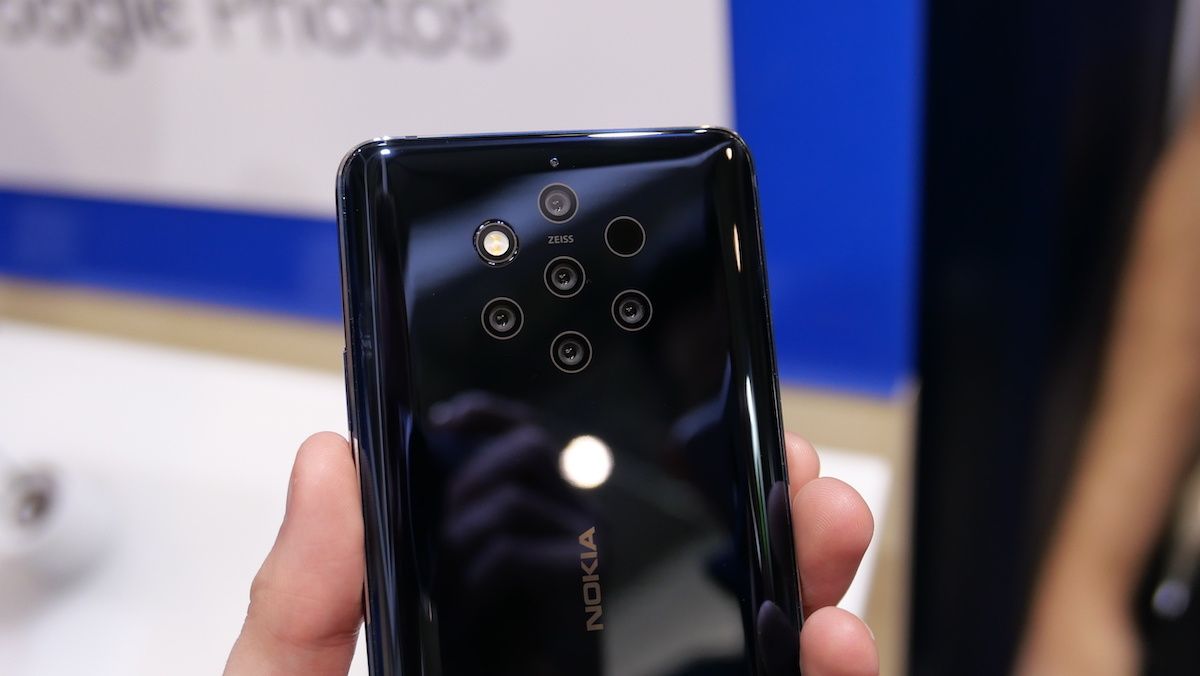This is why the Nokia 9 PureView has five rear cameras
The last time Nokia used the PureView name, it was on the 808 PureView of 2012, a smartphone which was hugely overweight - even for seven years ago - but housed a whopping 41-megapixel rear camera.
Such a high resolution was frankly unheard of in the smartphone industry, and even many dedicated cameras couldn't match the Nokia's pixel count. The 808 could even be bought with a camera bag and tripod, such as the seriousness of Nokia's photographic intentions.
Read More:
Now, the PureView name is back. This time it adorns the new $699 Nokia 9 PureView, which was unveiled this week at Mobile World Congress in Barcelona, the world's largest smartphone trade show.
Like its 808 predecessor, the Nokia 9 is all about photographic performance, and to that end it has an unprecedented five rear cameras, plus a flash and a time-of-flight sensor. These circular cutouts are arranged as if resembling a monument to photography; a Stonehenge for megapixels, if you will.
But, unlike many of its rivals, the Nokia 9 does not include any wide-angle lenses, nor does it have a zoom lens, or a macro lens.
Instead, the focus here - pardon the pun - is on image quality. This means a broad dynamic range which captures details in every part of an image, both in the shadows and the light.
Three of the camera lenses capture images in monochrome (black and white), while the other two work in color. This isn't new - Huawei put a monochrome sensor on the P6 back in 2016, but just the one.
Interestingly, all of the Nokia 9's cameras have the same 12-megapixel Sony image sensor sat behind them, with an aperture of f/1.8.
Those monochrome sensors capture a wider spectrum of light than their colour counterparts - 2.9 times more, Nokia owned HMD Global says - and this translates into producing images with extra detail. In fact, the whole arrangement can capture between 60 and 240 megapixels of image data each time you press the shutter button. This is then crunched by a dedicated processor created by Light, a camera company, and a few seconds later your photo is ready for viewing.
As with other phones, every time you take a photo with the Nokia 9, the device captures many images - a process called bracketing - then combines them to produce the finished article.
Another area where the Nokia 9 excels - at least in theory - is with the time-of-flight sensor, also known as a 3D depth sensor. This measures the time it takes infrared light to leave the phone, bound off an object, and return. The phone then uses this data to work out what's in the foreground and background of your shot, and lets you adjust the focus point after the photo is taken.
The HTC One (M8) did this back in 2014, but where even today's phones only break the depth of the scene down into 10 layers, stretching from the nearest to the farthest subject in shot, the Nokia 9 captures 1,200 layers. This should mean precise bokeh - the blurred-background effect SLR cameras are capable of, and which smartphone emulate with software.
Finally, and with a nod to keen photographers, the Nokia 9 can capture images in the RAW file format. This means the file includes all of the data captured by the camera system, allowing you to make better edits in software like Adobe Lightroom - which the Nokia 9 is compatible with - as there's more data to play with than in a regular, compressed JPEG image.
The Nokia 9 PureView costs $699 and is available to pre-order now, with deliveries starting in March.
